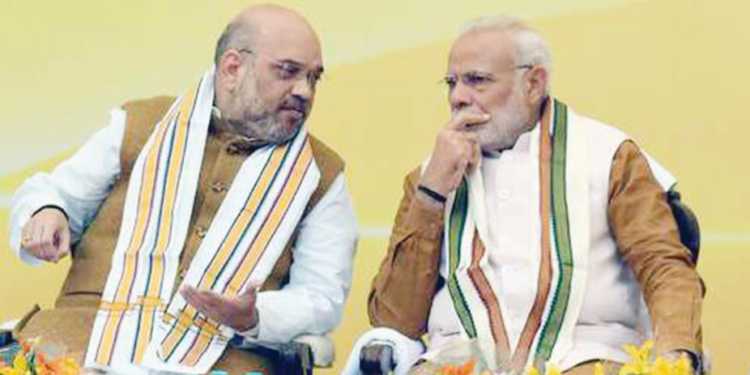The elections to the legislative assembly in Uttar Pradesh is still a year away but the ruling party in BJP has started its preparations already. While a confused opposition in SP and BSP is hedging on ‘Brahmin’ voters to script a comeback story, thus posing no conceivable threat to Chief Minister Yogi Adityanath, there only lies one bottleneck. The anti-incumbency factor cannot be ruled out even if a popular government is at the helm of affairs. Hence, the BJP is expected to employ its Gujarat model of ruthlessness in the UP elections to eliminate any such eventuality.
Gujarat has been BJPs bastion for the last twenty years. Despite the opposition using the anti-incumbency factor to rile the voters and turn them against the BJP, the saffron party has managed to hold its fort successfully and successively. The secret behind the win is simple — after every five-year cycle, BJP cuts the party MLAs to size that have not performed well. Meaning, it brings in a fresh batch of faces that do not carry past baggage.
Some political pundits have remarked that following the Gujarat model of countering anti-incumbency, Yogi could bring the sledgehammer on at least 100 legislators.
In the 2017 UP Assembly Elections, BJP surprised everyone by amassing 312 seats out of a total of 403 seats, while the NDA alliance cumulatively won 322 seats. To emulate a similar performance, BJP is expected to make individual report cards of the work done by its MLAs in the last five years. The said report card will help the party high command in deciding which lawmaker needs to be given another ticket while which one needs to be cut loose.
And it’s not only Gujarat where BJP has implemented the said formula. In the 2017 Delhi municipality polls, BJP had fielded new faces on all the 272 wards of the state. Cutting the tickets of municipal councillors who were facing allegations of corruption was a bold endeavour but the results proved that it worked as BJP won a total of 181 seats out of 272 seats to stage a third successive term.
Similarly, in the 2019 General elections, despite a gigantic Modi wave, BJP cut the tickets of several sitting MPs to eliminate the incumbency fatigue. It had cut tickets of 90 MPs, compared to 2014, out of which 5 MPs had left the party while few of the MPs were left behind due to the 75+ age ceiling.
BJP plugging the gaps
Moreover, as reported by TFI, in the first such development since Yogi Adityanath came to power, BJP national general secretary (organisation) BL Santhosh had last month held one-on-one meetings with ministers and party leaders in Lucknow, followed by a meeting with Chief Minister Yogi Adityanath at his residence.
The meetings were part of BJPs feedback loop, designed to plug the gaps that are often left open between the party high command and unit level workers. The same organisational level gaps that cost BJP heavy in West Bengal.
As reported by TFI, according to an ABP-C Voter survey conducted in March earlier this year, if elections were to be held now, BJP would storm into power once again. The BJP is projected to win 289 seats in the 403-seat Uttar Pradesh Assembly. Meanwhile, SP is projected to be the second-largest party with 59 seats followed by BSP with 38 seats but not posing any real challenge to the saffron party.
BJP can afford to let its guard down and go easy on the election preparations but ‘ruthless’ appears to be the keyword passed along from the party high command. The preparations have begun and despite the sorry situation of the opposition, the BJP does not want to leave any loopholes in its electoral preparedness, even if it means letting go of its sitting MLAs.
